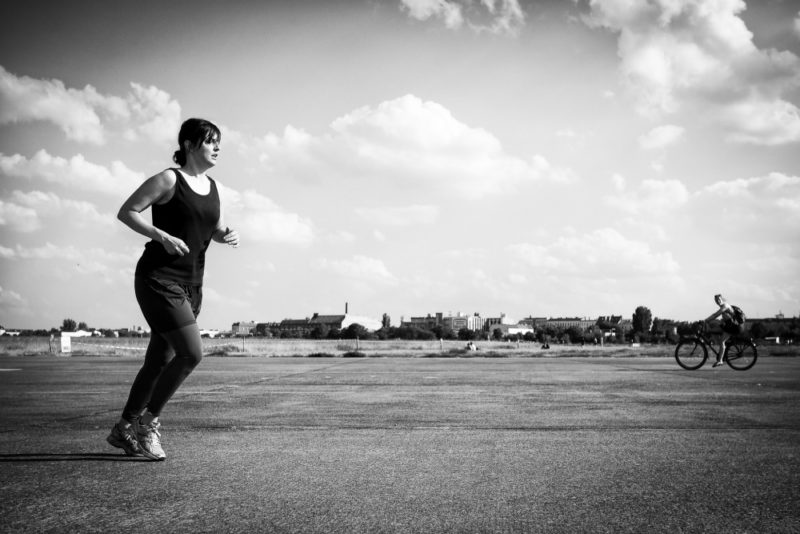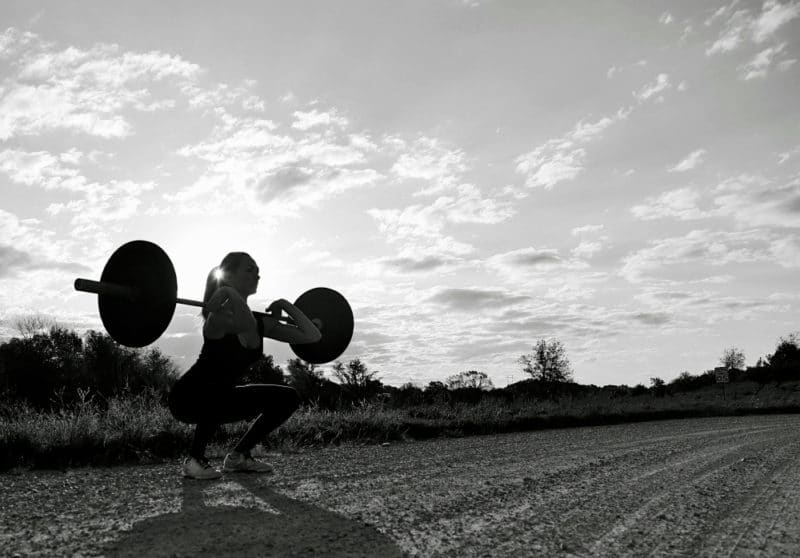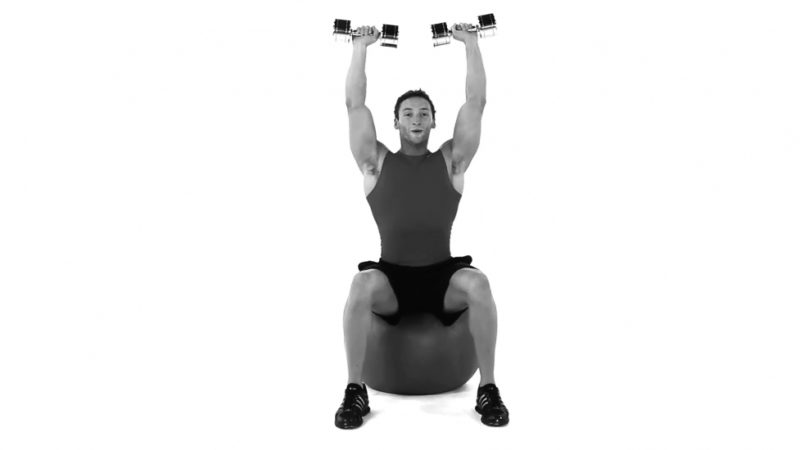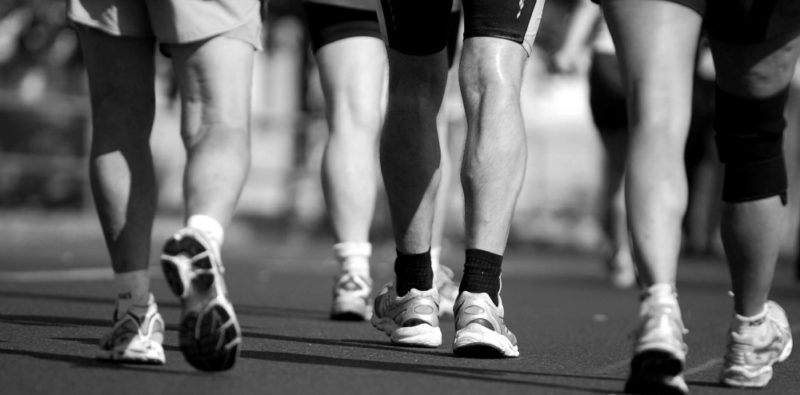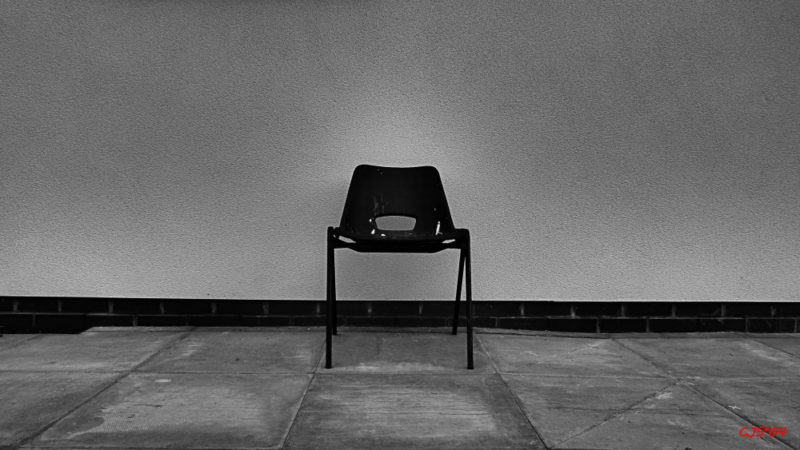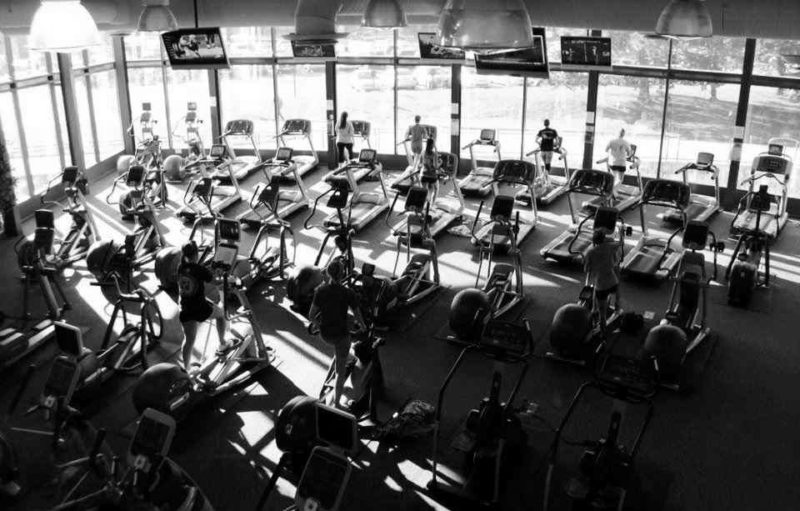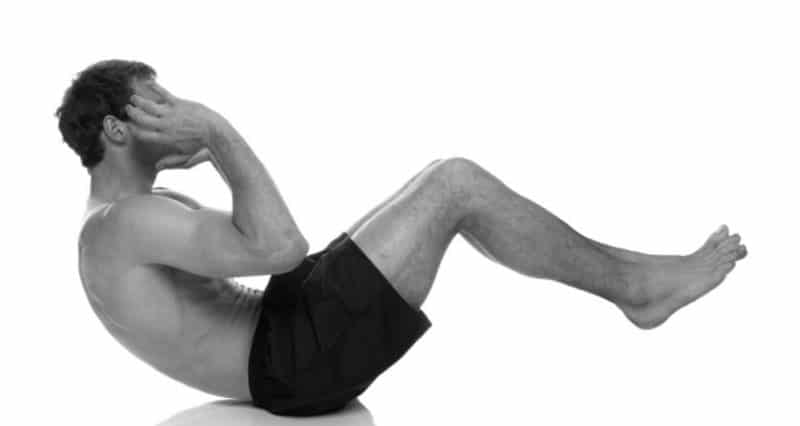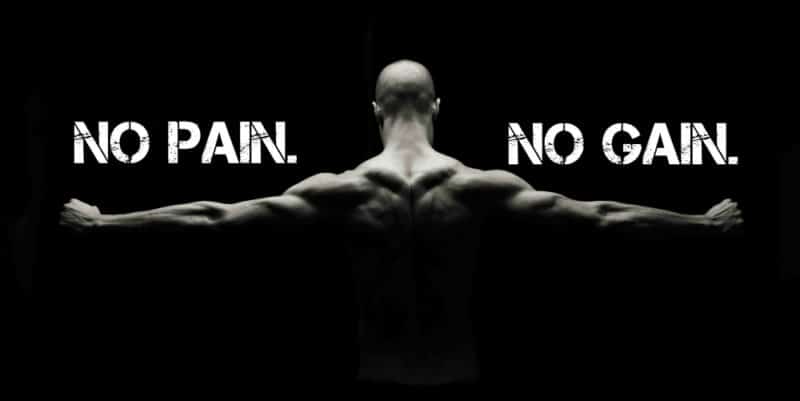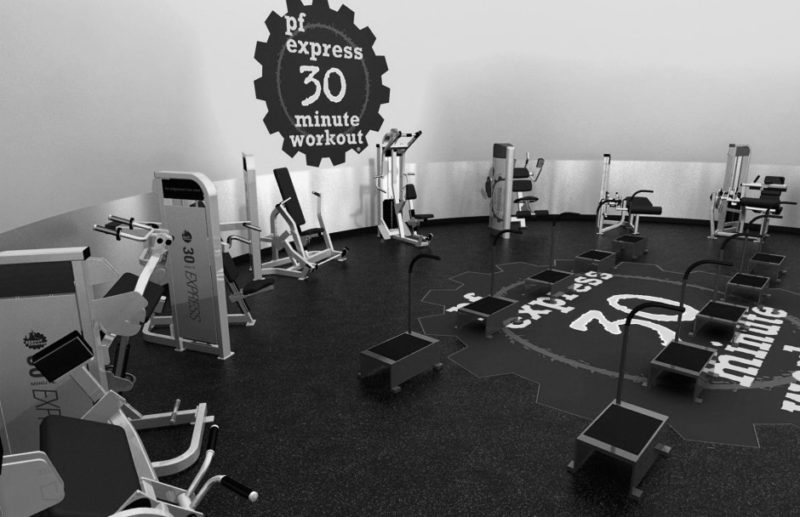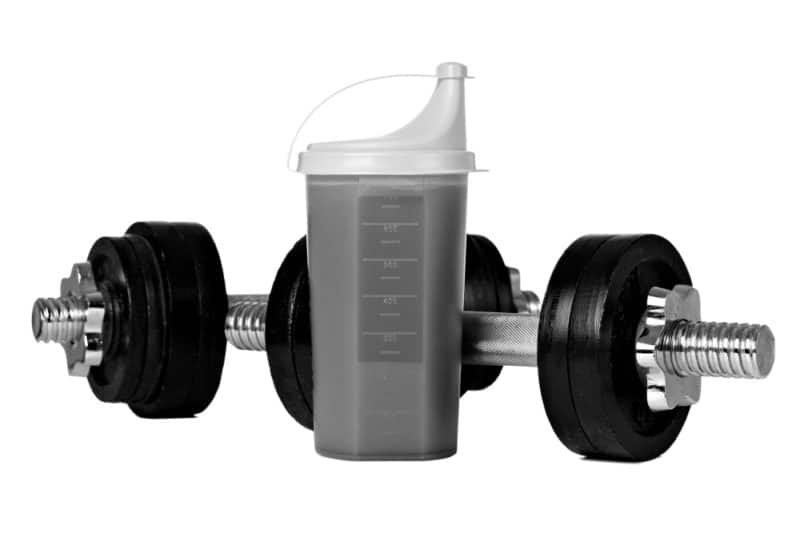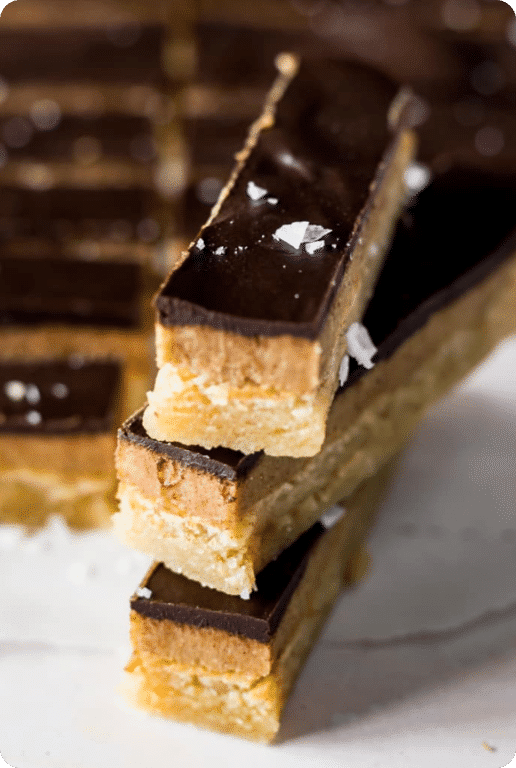If you’re on a mission to lose weight, you need to be very careful whose advice you take about your workout plan. You’ll find that everyone has an opinion on what you should and shouldn’t be doing.
These fitness myths travel from person to person, from gym to gym, and most of them are very, very wrong.
To save you the headache-inducing, time-wasting trial and error of figuring out what works and what doesn’t, I’m going to debunk a lot of these common workout myths once and for all.
If you know me, I’m not going to bring you the fluff. I’m all about giving you fitness tips that make getting fit and healthy simple again.
The Top 10 Fitness Myths That May Be Leading You Astray
Fitness Myth #1: Cardio is the best way to burn calories
The longstanding, general belief in our culture is that cardio is the best way to burn calories. As a result, when most people get a gym membership, they head straight for the treadmills. It’s such a shame. It’s one of those fitness myths that just won’t die.
Yes, you can certainly burn calories by killing yourself on the treadmill, but it’s really not the most effective way to do so. The reality is that the calorie burn you’re looking for is not about any one session. You want to turn your body into a metabolic fat-burning machine that burns calories 24/7.
The only way to do that is by what I call investing metabolically, which means investing in growing muscle so you can develop a healthy metabolic rate.
A cardio workout is the ultimate short-term investment. When you’re on the treadmill or doing any other form of cardio exercise, you burn calories during that thirty-minute session, and for maybe an hour or two afterward from the post-exercise oxygen consumption effect. That’s it.
There’s simply no long-term benefit from a fat-loss perspective doing cardio. If fat loss is what you’re going for, focus on strength training, which will keep you burning fat for hours. Better yet, combine the two, as we’ll explore further on below.
Fitness Myth #2: Strength training bulks you up
This is one of those fitness myths that’s especially easy to debunk, because I’m the ultimate proof that it’s very untrue.
I strength-train regularly—and enjoy it!—and I’m not a very bulky guy. Whether you get bulky or not all depends on the nature of the workout program you’re following.
If you’re eating a ton of food and following a body building program with high-volume, high-rep sets to absolute muscle fatigue, then yes, you’ll bulk up… if you’re a guy.
If you’re a woman, you’ll see some gain, but here are two really important factors to keep in mind:
-
- We all have a gene called GDF8. This gene regulates the amount of myostatin that we have in our body. Myostatin controls how much muscle we can grow. That level is pretty low for both men and women. It requires specific training and eating to work past this.
-
- Women have about 10 percent of the testosterone that men do. Even if you’re following the same workout program, you’re not going to bulk up in the same way a man would.
The way I prescribe exercise focuses on strength but avoids bulk building. I encourage this through the use of heavy weights for a low number of repetitions.
When you have strong muscle, you rev up your metabolic rate, and that’s how you burn fat 24/7. Challenge yourself to get stronger, and you’ll get leaner, not bulkier.
[Related: The #1 Cause of a Slow Metabolism]
Can you do me a big favor? Let this be one of those exercise myths you debunk to your friends and family so it can disappear for good, ok?
Fitness Myth #3: The stability ball is better
This is one of those fitness myths I fell for myself back in the day when I was still in school.
Back then, the stability ball was the hottest new fitness trend. The whole idea—which many people still believe—is that if you sit on the ball instead of a regular chair, it is better for your core because it activates those muscles much more than you would sitting on a chair.
That might be true until you get tired of sitting with great posture.
I’ve definitely been guilty of this, and it’s one of the reasons I don’t use the ball anymore. As soon as you stop sitting with great posture, guess what happens? You sit on the ball and kind of slouch forward. Is that any good for your pelvis? Is that any good for your posture? Absolutely not.
The same logic holds for your stability ball workouts.
I’ve seen people do ridiculous things, like kneeling on a stability ball doing one-arm shoulder raises. I’ll ask them, “What are you trying to do? What is the purpose of this exercise? In what way, shape, or form does this exercise translate into anything in real life?”
Sadly, the only thing these exercises do is make you look quite silly.
Simply put, performing exercises on a stability ball is not better than performing those same exercises on a stable surface. Sure, it challenges your core a little bit and your one deltoid, but the effect is miniscule.
For the most part, unless you’re training for a sport, you want to be specific to what you’re training for.
Most of us are not in sports, where we’re bouncing on balls all the time. We operate day-to-day on a stable surface, and, therefore, we are better off focusing our time on stable-surface activities like squats on the ground. The big bouncy ball is not all it’s cracked up to be.
Now you know, so let this be one of those workout myths you don’t buy into anymore.
Fitness Myth #4: Walking is enough
I’m sure this one is going to break a lot of hearts, but here’s one of those fitness facts that you should be very aware of: walking does not provide an adequate amount of exercise.
Walking is like breathing oxygen; it’s simply what you should be doing anyway. If you want to burn fat, get stronger and get in shape, walking should not be a part of your fitness regimen. It’s not a workout.
Walking could be a workout if you follow my advice and throw on a weighted vest and walk uphill. Or maybe if you put on that same vest and do lunge walks down the street. Those are workouts!
Taking your dog out for a nice, leisurely stroll? By all means, do it for relaxation, but that’s not a workout.
Fitness Myth #5: Regular gym visits make up for sitting all day
This one of those fitness myths that really bothers me. We live in a culture where we think we can sit at our desk from nine to five, and then go to the gym for half an hour and repent for all of our sedentary sins. The reality is that that’s not the way it works.
There’s been some really interesting research out of Vanderbilt University that shows that even if we spend an hour a day working out seven days a week, it doesn’t counteract the negative impact of sitting. That’s a shocker, isn’t it?
Instead of sitting eight or 10 hours a day, make it a point to get out of your chair every 20 minutes and stretch a bit. Maybe do some squats or jog up some stairs. Whatever you do, just make sure you aren’t sitting down all day long.
The key is to think about working out less but moving more. You can also use a standing desk as standing makes your body activate more muscle that helps keep you healthy.
Fitness Myth #6: Doing cardio is the only way to get a cardio workout
Here’s a hot tip: You can get a cardio workout and a strength-training workout at the same time.
Rather than doing an hour of weights followed by an hour of cardio, take a couple of exercises—let’s say squats, push-ups, chin-ups, plank—and do a set of each with no rest in between. Take a break, and repeat this three or four times.
Guess what’s going to happen: With little to no rest, your heart rate is going to be racing, you will be out of breath, and you will be sweating. What does this mean? It means you’ve just gotten a cardio workout without doing a cardio workout. Pretty cool, right?
[Free Workout: Blast Fat with This New Strength and Interval Cardio Combo Workout]
Fitness Myth #7: Sit-ups burn belly fat
This one is particularly frustrating, and even though many people have debunked it time and time again, it simply refuses to die. Here’s what you need to know:
Your sit-up muscles are actually an eight-pack muscle called the rectus abdominus. By doing repeated sit-ups, you’re simply toning it. Unfortunately, you’re also imposing stress on your lower back.
Here’s a test that you might not want to try: do a thousand sit-ups and see if your overall body heat increases. It’s like doing a thousand biceps curls. Your abs will get tired and your back will be sore, but it’s going to do nothing for your overall thermogenic metabolic activity.
You need to perform full-body exercises that require big movements—squats, deadlifts, push-ups, chin-ups—and move greater loads over greater distances. These are the types of movements that are going to burn belly fat and overall body fat. You simply cannot spot-reduce fat; you can only spot-strengthen.
[Related: The 14 Best Ab Exercises for a Rock Solid Core]
Fitness Myth #8: No pain, no gain
I have one word for this often-repeated mantra: nonsense.
Let me be absolutely clear: The exercise philosophy of no pain, no gain leads to no results. If anything, no pain, no gain leads to overtraining, injury and a life of misery.
Please wipe this harmful phrase out of your vocabulary. You don’t have to kill yourself in the gym.
You have to train intelligently. Yes, you want to stress your muscles; yes, you want to challenge yourself; but do you need to do it to the point of being sore all the time? Not at all.
Fitness Myth #9: Machines are best for beginners
I see a lot of personal trainers make this mistake, and it’s a big one.
Actually, it’s also one of the more harmful fitness myths.
So often at the gym, you’ll see a new client come in looking for guidance. The first thing many trainers do is throw them on a machine. I wince every time I see this.
First of all, those machines are not built for all body types. If you have a longer torso, like I do, then many of them might not be suitable for you. It’s much the same if you have longer legs. There might be one or two variations, but many machines are not suitable for most body types.
Furthermore, most machines focus on isolated movements that don’t activate multiple muscles in your body; that’s no good.
Here’s what you want to do if you’re a beginner: Start with bodyweight exercises.
Teach yourself the mechanics of movement and learn the proper technique of exercises like squats and push-ups. Teach yourself how to lift something off the floor properly.
By learning proper bodyweight exercises, you give yourself a solid foundation for when you move up to weights. If you’d like to get a little bit more of a caloric burn during your workout, perform the exercises in a circuit.
Fitness Myth #10: You have to have protein after a workout
This is a really big one.
You don’t have to have protein after a workout. In fact, it doesn’t really matter when you have protein as long as you have it at some point during the day. Studies have shown that guzzling a huge amount of protein right after your workout doesn’t help build muscle any better than having protein at any other time.
Now, what I would suggest is eating after a workout is very important.
If you’re not in the game to burn fat, and you’re really in it to improve your performance and look and feel great, your biggest meal of the day should come after your workout. This is when you really want to get your fill of carbohydrates, protein and healthy fats.
If anything, you should have a protein drink before your workout. Mind you, you don’t have to do this, but you can, especially if the protein drink is low or negligible in carbohydrates and high in branch chain amino acids.
[Related: Pre and Post-Workout Nutrition: The Untold Truth]
That’s going to keep your body in a highly metabolic state, which is going to spare any muscle breakdown during your workout. It’s also going to increase growth hormone, which is going to help you build muscle, although not to the point of bulking up.
Don’t put a lot of fruit into the shake. If you’d like, have that afterward. If you do that before the workout, you spike your insulin, and with a lot of insulin in the blood, your workout now becomes about using sugar, not fat, as your main fuel source. From a fat loss perspective, that’s not beneficial at all. If you have a shake, make sure it’s protein and water and that’s it.
There you go: 10 blatant fitness myths that have been accepted as truth for decades. I hope reading through this has given you a few moments of clarity and certainty about what not to do.
Enjoy This Article?
Did you enjoy this article on The Top 10 Fitness Myths? You might also like my Fat Blaster Workout. It’s designed to help you get leaner and fitter by combining a strength and interval cardio session all into one workout. Click the banner below to get it for FREE.

